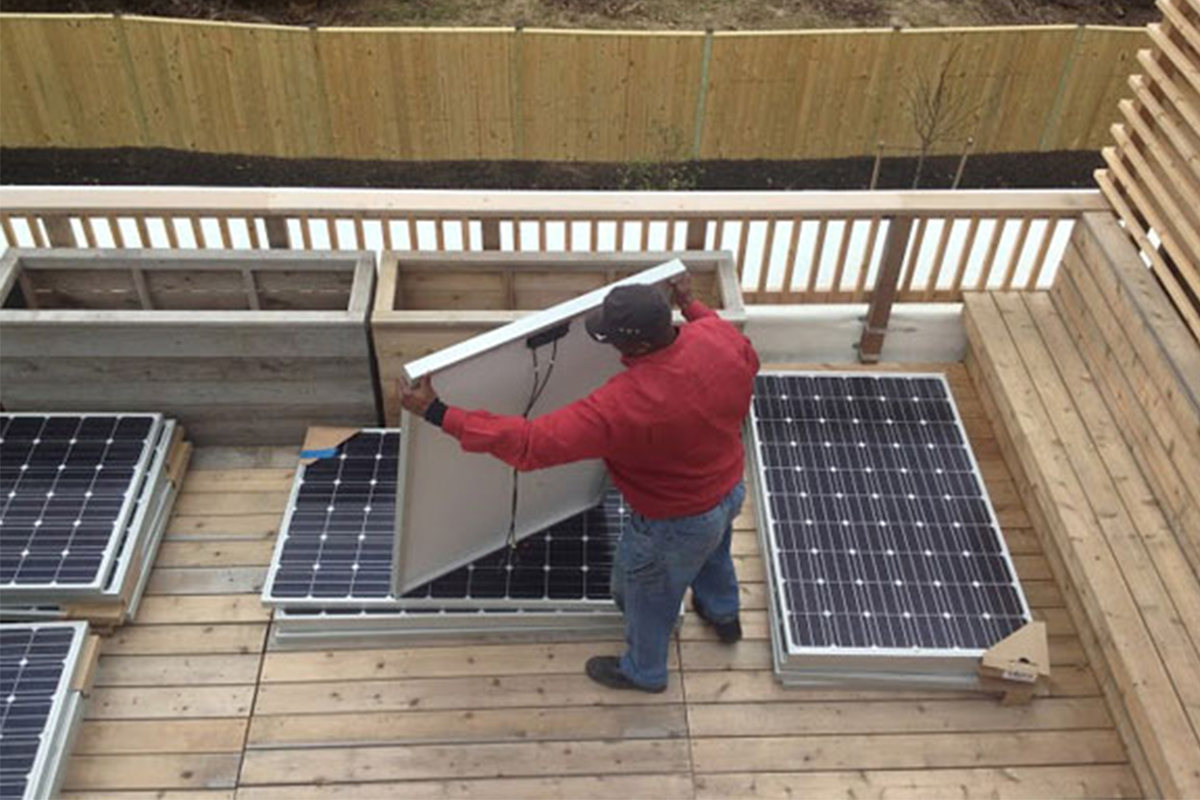What do solar panels have to do with affordable housing? A lot.
April 8, 2014 | ElevationDC
Home values in D.C. nearly doubled from 2000 to 2010, while income for the bottom 40 percent of the city’s population barely budged. A minimum-wage worker would have to clock in 137 hours a week to afford a two-bedroom apartment at fair market rent. The District’s New Communities Initiative – a plan to turn four public housing communities into viable mixed-income neighborhoods – is years behind schedule and widely considered a failure.
The list of affordable housing crises in the nation’s capital goes on. But there is at least one bright spot, and it comes in the form of an institution you are helping fund but may not have even heard of: the DC Sustainable Energy Utility (DCSEU).
“As an organization, we can’t control the rents that are going to be charged,” said Ted Trabue, the managing director of DCSEU. “But for the second largest bill that the tenants will receive we can have a large impact — and that is their utilities.”
For several years, the city helped thousands of qualifying low-income residents pay their bills at a once-a-year-event called joint utility discount day. As the number of people applying for assistance steadily increased, the city realized it needed to do something to reduce energy consumption and found that programs run by utility companies and the D.C. Energy Office didn’t go far enough, according to Trabue.
In 2008, D.C. passed the Clean and Affordable Energy Act, which called for an independent company to run the city’s sustainable energy programs. The contract, which was won by the non-profit Vermont Energy Investment Corporation, included some very specific and forward-thinking mandates that go beyond simply reducing the city’s energy consumption. The DCSEU was born.
The DCSEU isn’t a traditional energy utility. Instead of generating power, it’s charged with reducing the city’s energy use through energy efficiency and renewable energy services, and it is funded through a surcharge on electric and gas ratepayers. For example, one program helps homeowners reduce their utility bills through rebates on energy-efficient appliances. It also must create “green collar” jobs for District residents and spend 30 percent of its funding in low-income communities.


